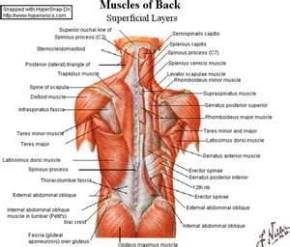Pilates exercises are common place at physical therapy centers, chiropractors are recommending Pilates, and “My back used to hurt all the time and now I don’t feel it anymore” is a phrase I hear a lot from people who do Pilates consistently. So what is it about Pilates that works so well for back pain relief?
What makes Pilates so effective is that it addresses the underlying structural imbalances in the body that lead to back pain. Issues like lack of core support, pelvic instability, muscular imbalances, poor posture, and lack of body awareness all effect back health.
Pilates Helps Correct Posture
In Pilates, we pay a lot of attention to how our body parts are lined up in relation to each other, which is our alignment. We usually think of our alignment as our posture, but good posture is a dynamic process, dependent on the body’s ability to align its parts to respond to varying demands effectively. When alignment is off, uneven stresses on the skeleton, especially the spine, are the result. Pilates exercises, done with attention to alignment, create uniform muscle use and development, allowing movement to flow through the body in a natural way.
For example, one of the most common postural imbalances that people have is the tendency to either tuck or tilt the pelvis. Both positions create weaknesses on one side of the body and overly tight areas on the other. They deny the spine the support of its natural curves and create a domino effect of aches and pains all the way up the spine and into the neck. Doing Pilates increases the awareness of the proper placement of the spine and pelvis, and creates the inner strength to support the natural curves of the spine. This is called having a neutral spine and it has been the key to better backs for many people.
Pilates Develops Core Strength
Good posture that goes beyond the “look” of being aligned requires core strength. Having core strength means that all of the muscles of the trunk of your body are strong, flexible, and working together to support and stabilise the spine.
Core strength is deeper than the big surface muscles that we are used to thinking of as those of the trunk of the body, like the rectus abdominis, the infamous 6-pack abs muscle or the beautiful big muscles of the back, like the lattisimus dorsi, popularly called “the lats.” The core muscles include the muscles that are below the surface musculature.
So while many forms of exercise focus on strengthening the big surface muscles, Pilates trains the body so that all of the core muscles work together to support and stabilise the back. Part of developing effective core strength is to train the body to know when to release, as well as activate, its core muscles. So while core strength is the catch-all term, we might say that the core coherence that Pilates teaches is essential for back health.
Some of these less obvious but very important core muscles are the muscles of the pelvic floor; the psoas, which play a huge role in keeping us upright and in hip bending; the transversospinalis, which are small muscles that weave along the spine; and the transverse and oblique abdominal muscles. The diaphragm, our prime breathing muscle, is right in the middle of the core. All of these muscles play crucial roles in the support and stability of the spine.
A healthy spine can curve forward and backward, twist, and move side to side, and do so in a way that reveals all the subtle articulations that our many vertebrae allow us to have. As core strength develops, the back muscles learn to work in harmony with the abdominal muscles, forming protective support for the spine that increase the potential range of motion of the spine. Pilates exercises are easy to modify so that we can develop spinal flexibility at our own pace. This is one of the things about Pilates that makes it easy for people with back pain to work with.
Pilates Increases Body Awareness
Whether the cause of pain is from an injury or as is often the case, a culmination of the effects of poor posture and inefficient movement habits, back pain is a messenger letting us know that we have to pay more attention to how we live in our bodies. The Pilates method is full attention exercise. You can’t do Pilates without becoming extremely aware of your alignment and the energy you bring to movement.
This kind of awareness practice is extremely powerful for people with back pain because we not only improve physical functioning, but as awareness increases, we move beyond the physical and mental holding patterns that back pain can create
Back pain has many causes and Pilates may not be right for all of them. If you have back pain, especially serious or chronic back pain, please check with your health care practitioner before you begin a Pilates program. If you do choose to begin Pilates, it is important to work with a fully certified instructor who is aware of exactly what challenges you are working with.
Sarah Pennicott
Personal Trainer & Pilates Teacher
Filed under: PILATES | Tagged: back pain, masterfitness, pilates | 1 Comment »





